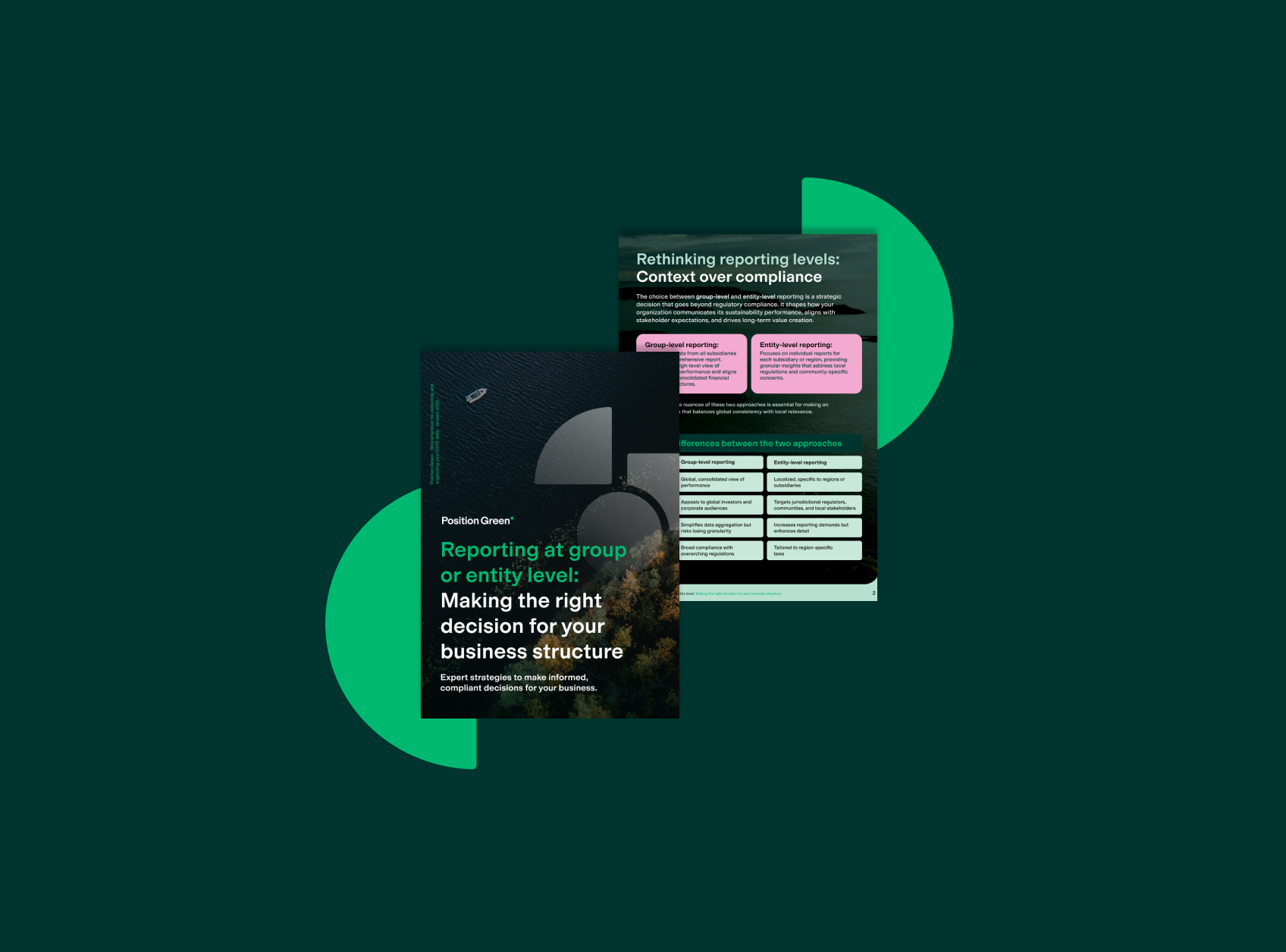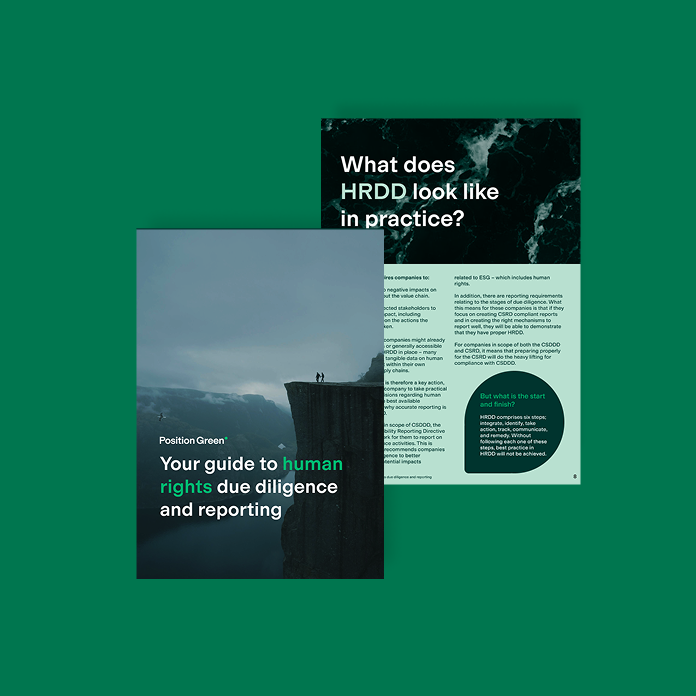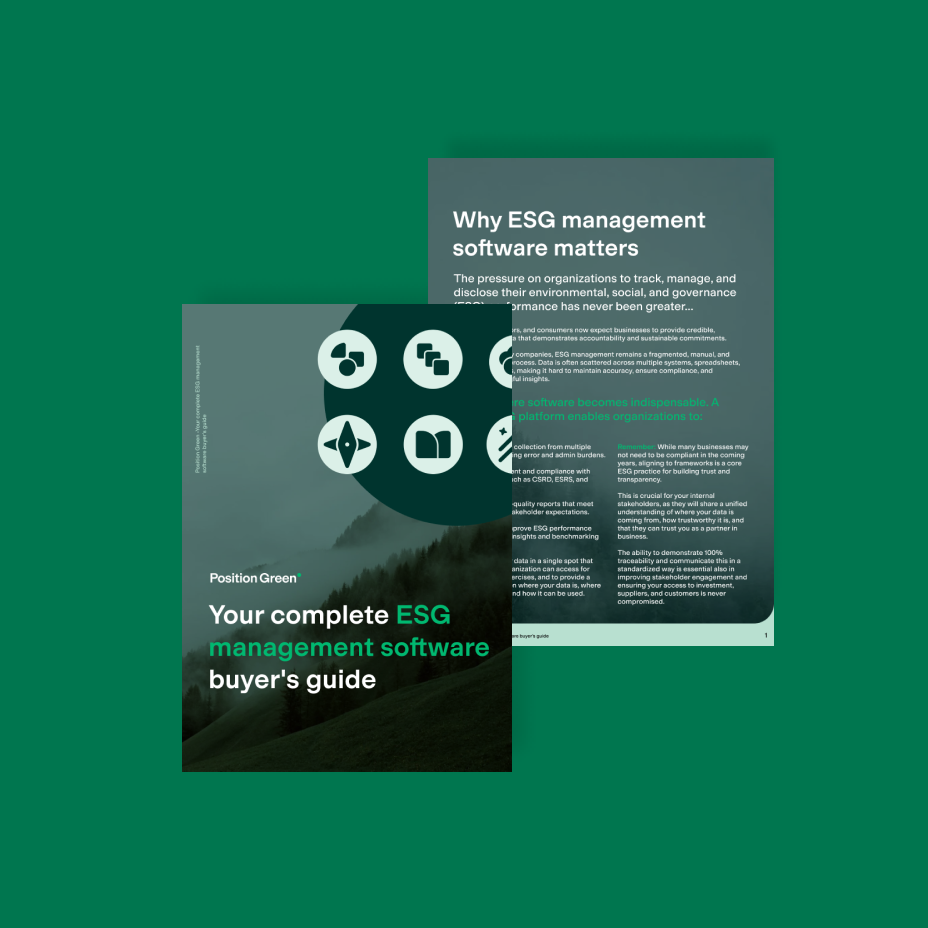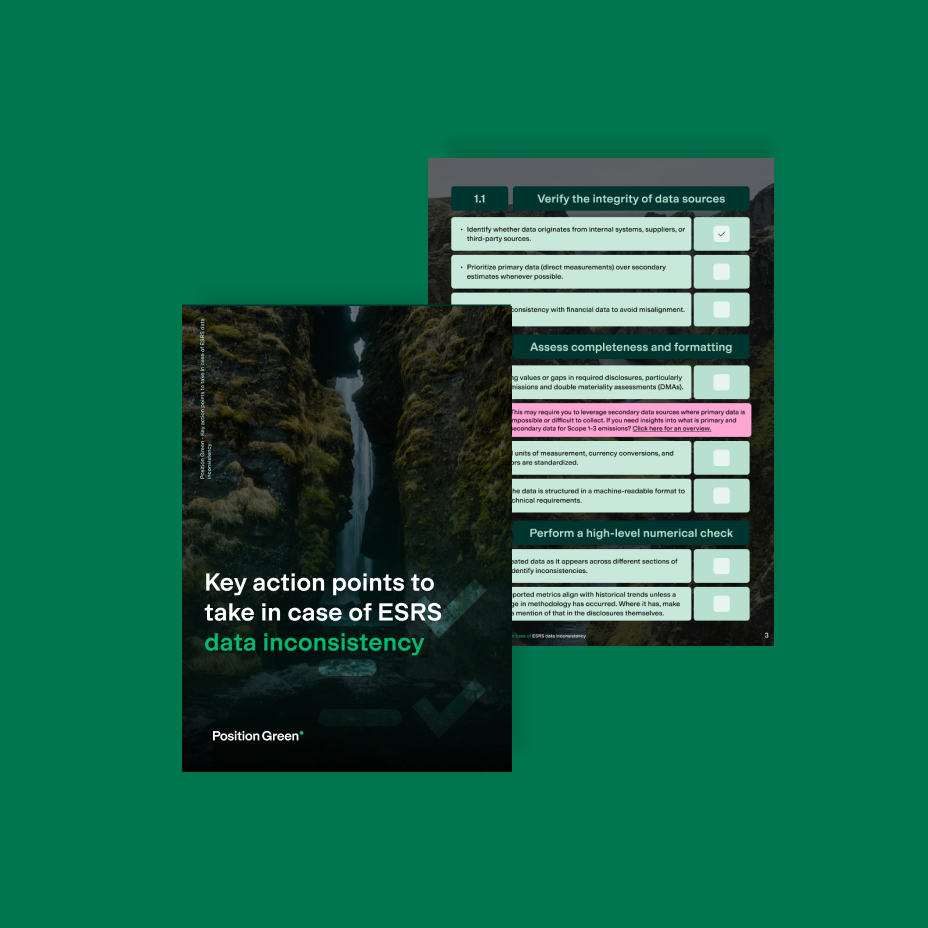Choosing the right reporting level for your business

So you have to conduct sustainability reporting. But which reporting level is right for you? This guide steps away from a one-size-fits-all approach and focuses on how your unique business structure, stakeholder demands, and operational realities inform the best path forward.
What you’ll learn:
- Key differences between group and entity-level reporting.
- Practical insights to align your reporting with stakeholder expectations and regional regulations.
- Expert strategies to build the right reporting infrastructure and meet compliance needs.
- Actionable steps to evaluate your business structure and choose the reporting level that works for you
Want to hear from our experts?
Jason Stanley, from Position Green, and Evan Grosch, from Sidley Austin, will guide you through the intricacies of preparing for regulatory changes, focusing on the critical decision-making process of whether to report at a group or entity level.
In this webinar, the experts will unpack the key considerations in determining which is the best fit for your company. Diving into the nuances of these regulations, highlighting their implications and offer practical guidance.
To watch the webinar recording, use the button below.
Watch webinar

